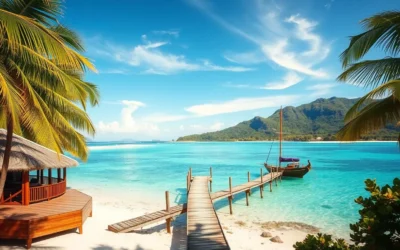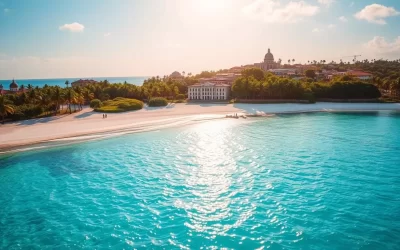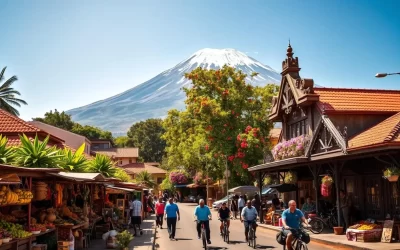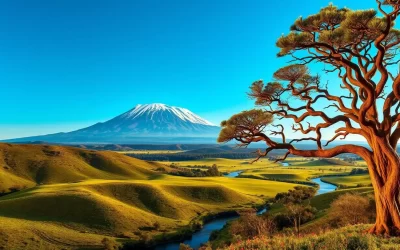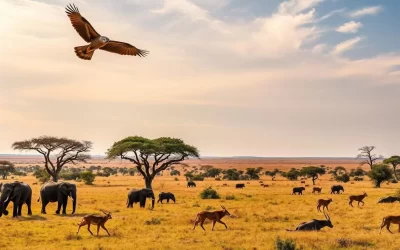Are you ready to explore a hidden gem in East Africa? Dodoma, the political capital of Tanzania, is a city that offers a unique blend of cultural and natural attractions.
Nestled in the country’s interior, Dodoma is surrounded by a flourishing agricultural region and breathtaking scenery, making it an ideal destination for those seeking an off-the-beaten-path adventure.
Discover the best things to do in this unassuming city, from iconic landmarks to local markets that showcase authentic Tanzanian culture. As the country’s capital city, Dodoma serves as a gateway to some of Tanzania’s most fascinating historical sites.
By visiting Dodoma, you’ll experience the heart of Tanzania’s politics and culture, making your trip to East Africa truly unforgettable.
Discovering Dodoma: Tanzania’s Capital City
Dodoma, Tanzania’s capital, offers a unique blend of history, culture, and natural beauty. As you explore this vibrant city, you’ll discover its rich heritage and significance in Tanzanian history.
The History and Significance of Dodoma
Dodoma is more than just a town; it’s a city with a deep history and cultural significance. The city’s history dates back to the colonial era, and it has since become a symbol of Tanzania’s independence and growth.
The significance of Dodoma lies in its role as the country’s capital, housing important government institutions and landmarks.
Getting to and Around Dodoma
Planning a trip to Dodoma is relatively straightforward, thanks to its accessible airport that connects to major cities like Dar es Salaam and Arusha. Upon arrival, getting around the city is easy:
- Reliable Dala Dala minibus services that make traveling within the city and to nearby attractions convenient and affordable.
- Taxis and motorcycle taxis (boda-bodas) for shorter distances, providing flexibility in your travel plans.
- A compact city center that can be navigated on foot, allowing you to explore Dodoma’s charm up close.
For day trips to attractions outside the city, planning your transportation in advance is advisable.
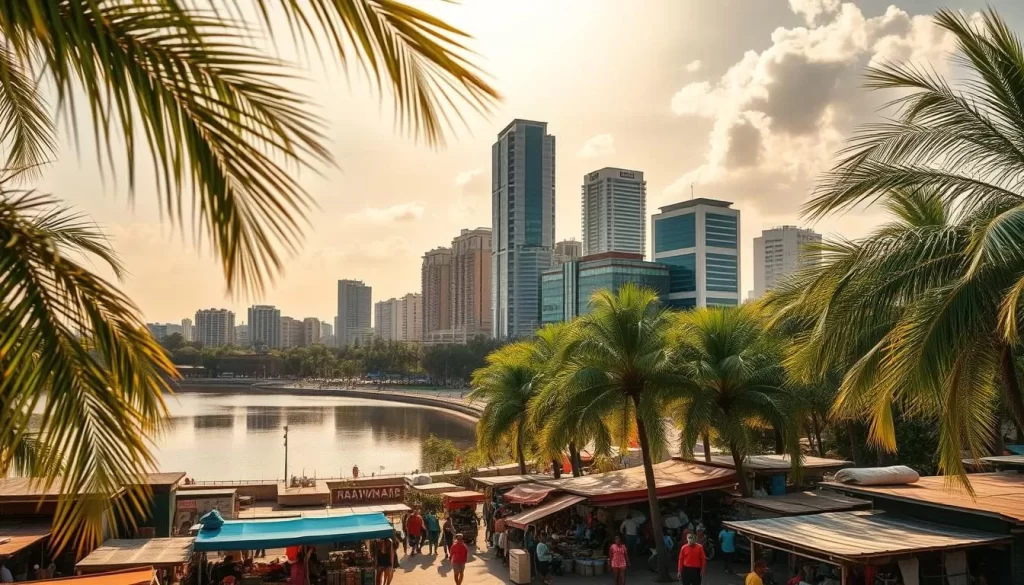
Simba Hill: Dodoma’s Iconic Landmark

As you explore Dodoma, you’ll inevitably be drawn to Simba Hill, the city’s most iconic landmark. Also known as the Lion Rock, this hilly formation crowned with a cluster of jutting boulders is undoubtedly the town’s most recognizable feature, visible from almost anywhere in the city.
Hiking to the Summit
The ascent to the top of Simba Hill takes about three hours, and depending on your route, you might pass the Prime Minister’s house, seamlessly integrated into the rugged landscape. This hiking trip is an ideal way to spend a half-day, offering breathtaking views of Dodoma and its neighboring villages.
Best Time to Visit and What to Bring
To make the most of your visit, plan your Simba Hill adventure during the early morning or late afternoon to avoid the intense midday heat of Tanzania’s central region. Here are a few things to keep in mind when preparing for your hike:
- Pack essential items including sturdy walking shoes, sun protection (hat, sunscreen, sunglasses), and plenty of water to stay hydrated.
- Bring a camera to capture the Lion King-esque views from the summit.
- Consider visiting during the dry season (June to October) when the paths are less slippery and the visibility is at its best.
- Plan your time wisely, taking into account transportation to and from the hill, the ascent, time at the summit, and descent.
By being well-prepared, you’ll be able to enjoy the panoramic views from the top of Simba Hill, making your hiking experience even more memorable.
The Bunge-Parliament Complex
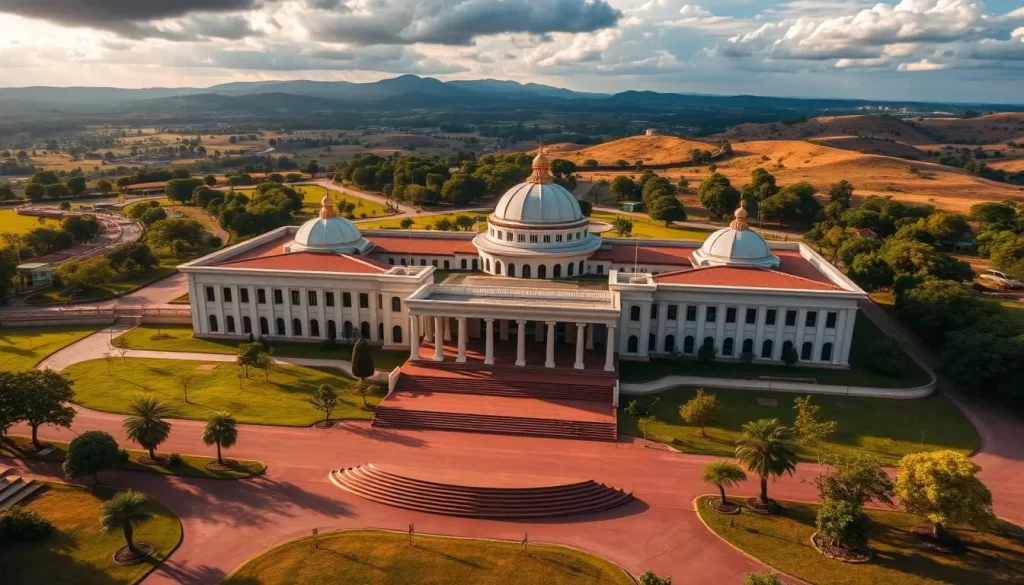
As you explore Dodoma, the Bunge-Parliament Complex stands out as a significant landmark. This complex is not only a crucial part of Tanzania’s governmental infrastructure but also a point of interest for tourists visiting the city.
Architecture and Historical Significance
The Bunge-Parliament Complex is an architectural marvel that reflects the country’s rich history and political significance. The complex is designed to accommodate the National Assembly, making it a hub of legislative activity. Visitors can appreciate the building’s design from the outside, even when internal access is restricted.
Understanding the historical significance of the complex provides insight into Tanzania’s governance and political evolution. The architecture is a blend of modern and traditional elements, symbolizing the country’s progress.
Visitor Information and Tour Options
Visiting the Bunge-Parliament Complex requires some planning. Tourists can visit the complex during parliamentary sessions to see the National Assembly chamber, but they must adhere to the rules and regulations. It’s essential to check the time and dates of the sessions to plan your visit accordingly.
Guided tours are available, offering insights into Tanzania’s political system and the functioning of its government. Visitors can learn about the things see during the tour, including the architectural highlights and historical context of the complex.
- Find out when you can visit the Parliament Complex, with access to the National Assembly chamber only available during parliamentary sessions.
- Learn about the guided tour options that provide insights into Tanzania’s political system and the functioning of its government.
- Understand the strict photography rules at the complex, where taking pictures without permission is prohibited and can result in penalties.
- Discover the best viewing points to appreciate the architecture from the outside when internal access is not possible.
- Get practical information about visiting hours, security procedures, and appropriate attire for tourists planning to include this important site in their Dodoma itinerary.
Religious Sites in Dodoma
As you explore Dodoma, you’ll discover a blend of religious landmarks that are significant to the local community. The city is home to various places of worship, each with its own unique history and architectural style.
The Anglican Cathedral
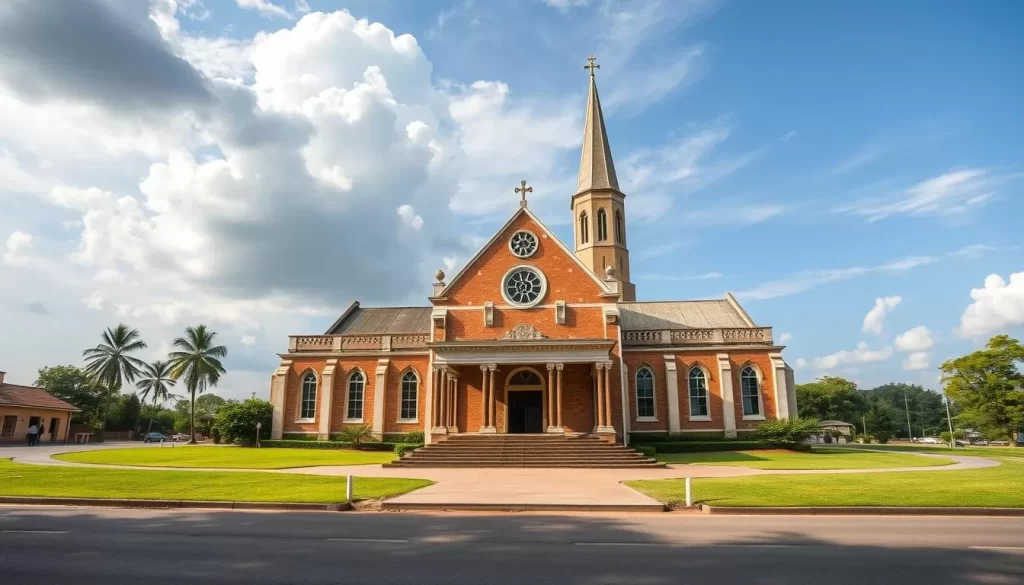
The Anglican Cathedral in Dodoma is a notable religious site that serves the local Anglican community. You can explore its architecture and learn about its significance in the city.
Gadhafi Mosque
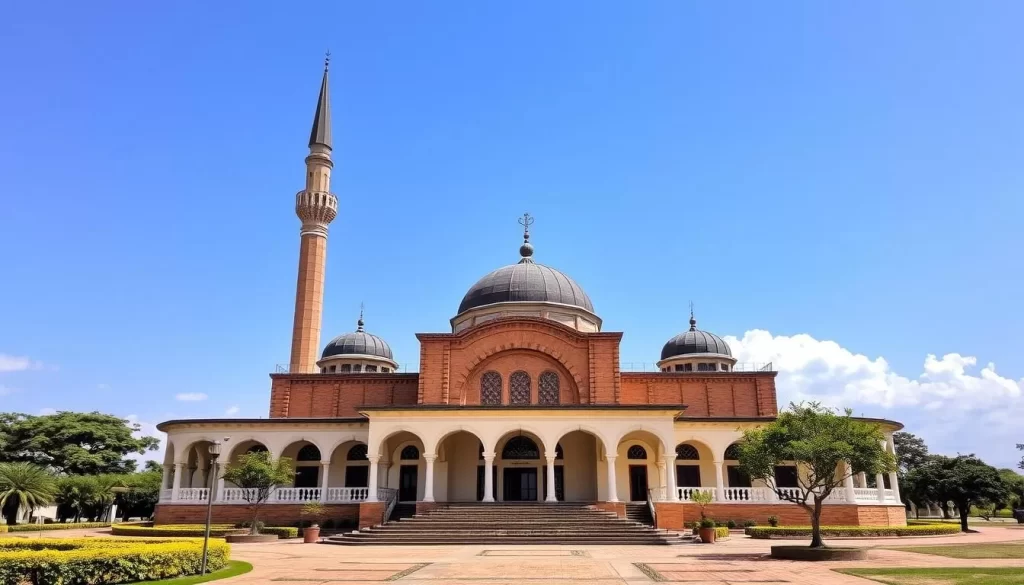
Gadhafi Mosque, named after the late Libyan dictator who funded its construction, is the largest mosque in Tanzania and the second largest in East Africa. With a capacity for 3,000-4,000 worshipers, it’s a significant place of worship, especially during Friday prayers. Its proximity to the airport makes it an unofficial gateway to the capital city.
The mosque features a minimalist architectural design, focusing on creating a peaceful space for the Muslim community. Visitors can learn about its history and significance, as well as the appropriate etiquette for non-Muslim visitors.
Nyerere Square: The Heart of Dodoma
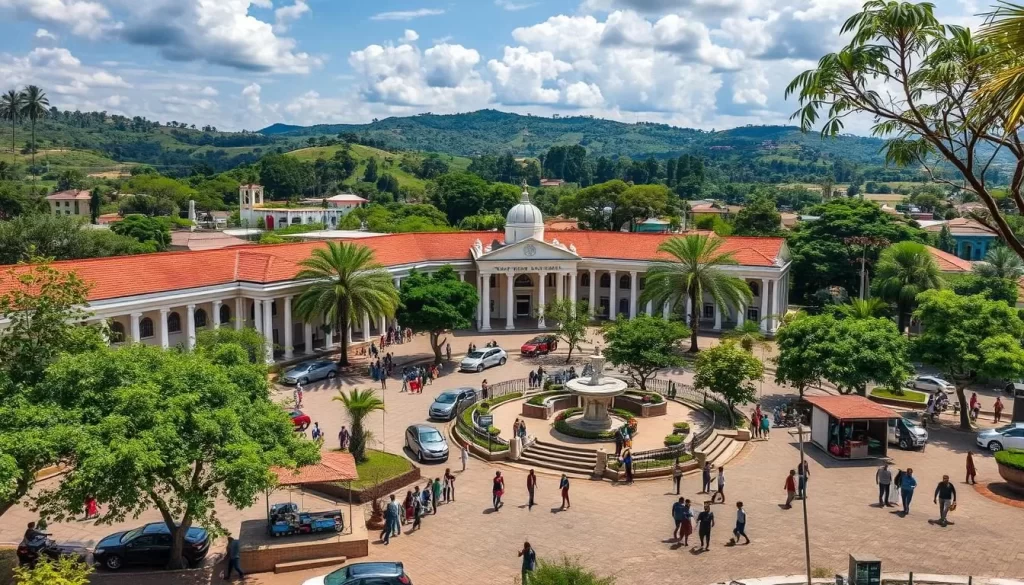
As the heart of Dodoma, Nyerere Square is a place where history, culture, and community come together. This significant landmark is not only a testament to the city’s rich heritage but also a vibrant hub of activity that attracts tourists from all over.
Nyerere Square is known for its well-maintained gardens and the informal marketplace surrounding it. Here, local vendors sell a variety of handcrafted souvenirs and traditional Tanzanian goods, offering visitors a chance to experience the local culture firsthand.
The Monument and Its Significance
The monument at Nyerere Square is a significant historical landmark that honors the legacy of Julius Nyerere, Tanzania’s first president. It serves as a reminder of the country’s struggle for independence and its cultural heritage.
Local Markets and Souvenirs
One of the main attractions at Nyerere Square is the local market where you can find a variety of unique things to bring back home. From colorful fabrics and beaded jewelry to wooden carvings, the market offers a range of authentic handicrafts made by local artisans. Visitors can also experience the art of bargaining, an expected and enjoyable part of shopping in Tanzania.
As you explore Nyerere Square, you’ll find that it’s a lively atmosphere where locals and tourists mingle. The square is surrounded by well-maintained gardens, making it a pleasant spot to relax and soak in the local culture.
Kondoa Irangi Rock Paintings: A UNESCO World Heritage Site
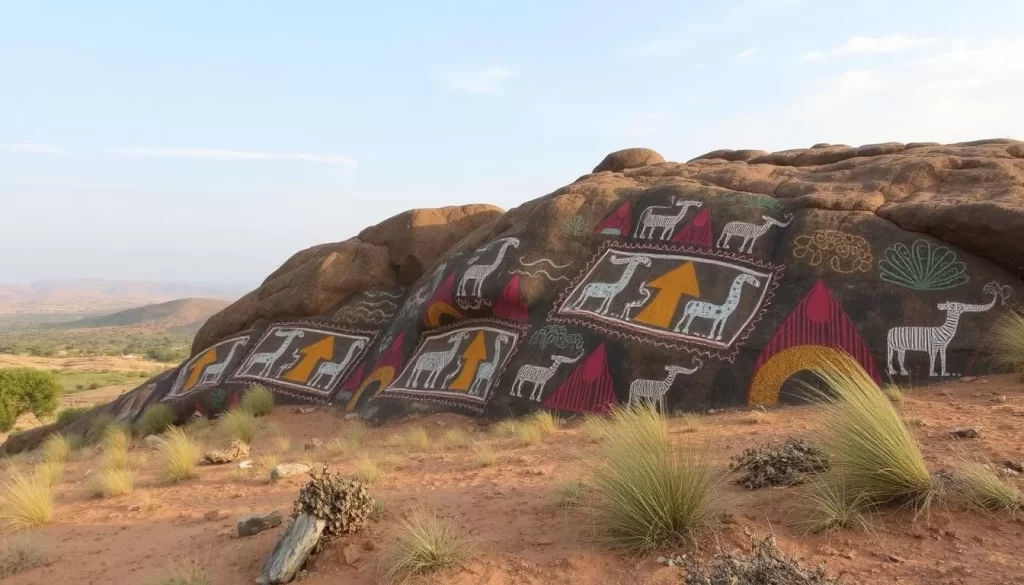
Located near Dodoma, the Kondoa Irangi Rock Paintings are an archaeological gem that offers a glimpse into Tanzania’s rich cultural heritage. As a UNESCO World Heritage Site, these ancient paintings are not only a significant historical treasure but also a popular destination for those interested in exploring the cultural depth of Tanzania.
The Historical Significance of the Rock Art
The Kondoa Irangi Rock Paintings are renowned for their vivid depictions of human and animal figures, as well as geometric patterns. These artworks, created by early inhabitants of the region, provide valuable insights into the lives, rituals, and environments of ancient Tanzanian communities. The rock art is a testament to the region’s rich cultural history, making it a fascinating site for historians and tourists alike.
The significance of the Kondoa Irangi Rock Paintings extends beyond their aesthetic appeal, as they are also an important part of Tanzania’s cultural identity. Visiting these sites allows you to connect with the past and understand the historical context of the region.
Planning Your Visit to Kondoa
To visit the Kondoa Irangi Rock Paintings, the most convenient option is to book a trip through one of Dodoma’s many travel agencies. They offer organized tours that include transportation and knowledgeable guides who can provide detailed information about the rock art and its historical significance. The most accessible site is the Irangi Hills near the village of Kolo, approximately a three-hour drive from Dodoma’s city center.
When planning your trip, consider the best times to visit, typically avoiding the rainy season to ensure optimal viewing conditions. Additionally, prepare with appropriate footwear, sun protection, and camera equipment to fully experience and document your visit to this remarkable world heritage site.
Dodoma, Tanzania: Best Things to Do for Food Lovers
As you explore Dodoma, you’ll discover that the city is not just about politics and history, but also about savoring delicious local and international dishes. The city offers a unique blend of traditional Tanzanian cuisine and international flavors, making it a paradise for food lovers.
Top Restaurants in Dodoma
Dodoma is home to several excellent restaurants that serve a wide range of cuisines. Two notable establishments are Leone L’Africano and The New Dodoma Hotel.
Leone L’Africano, located in the shadow of Lion Rock, serves delicious Italian cuisine, including some of Tanzania’s best pizzas. You can also enjoy a variety of regional wines or opt for a vintage from Europe. The restaurant is part of a larger complex that includes a 12-hole mini-golf course and a playground, making it an ideal spot for families.
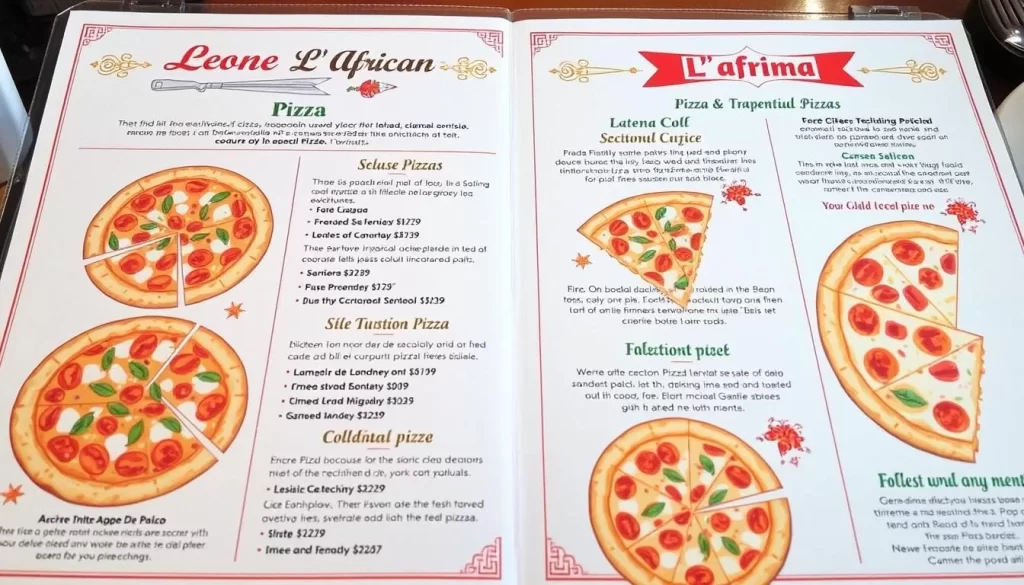
The New Dodoma Hotel offers a diverse menu influenced by international cuisines, with popular options including pizza, fish and chips, dhal tadka, and fajitas. The hotel’s outdoor Barbeque Village is a hit for dinner, grilling a variety of meats. Additionally, the hotel’s Chinese-owned restaurant is worth trying, although the quality can be hit or miss.
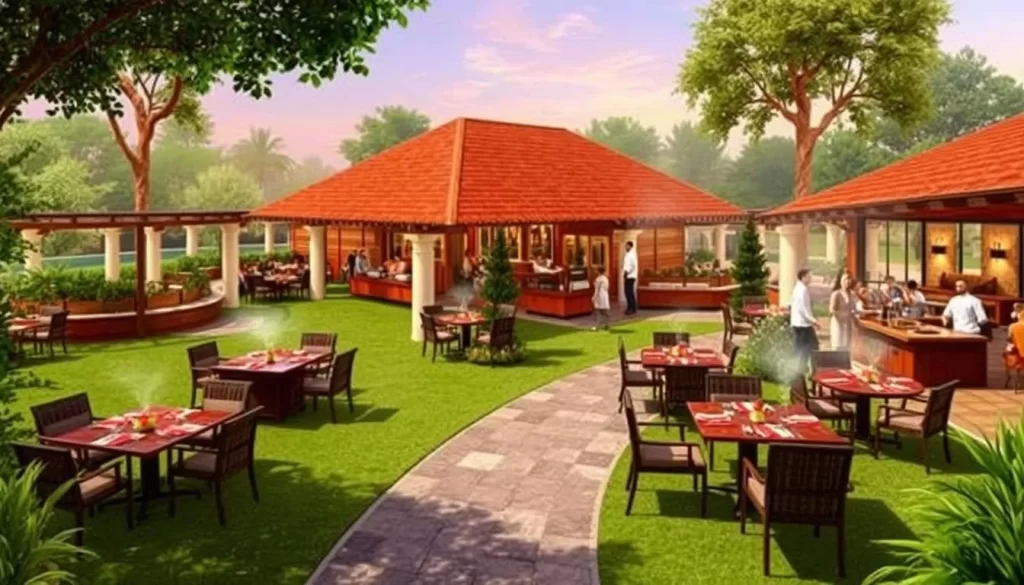
Local Tanzanian Cuisine to Try
When in Dodoma, be sure to try some of the local Tanzanian dishes that showcase the country’s culinary traditions. Some must-try dishes include:
- Ugali: Tanzania’s staple food made from maize flour, typically served with various meat, fish, or vegetable stews and eaten with your hands.
- Nyama Choma: A popular East African dish of grilled meat (usually goat or beef) seasoned with local spices, a must-try for meat lovers.
- Pilau: A fragrant rice dish cooked with a blend of spices including cardamom, cinnamon, and cloves, reflecting the coastal influences on Tanzanian cuisine.
- Chipsi Mayai: A beloved street food consisting of an omelet filled with french fries, showcasing how local people have adapted western foods into their own culinary traditions.
- Mandazi: Sweet fried bread similar to doughnuts, commonly enjoyed for breakfast or as a snack with tea throughout Tanzania.
These dishes offer a glimpse into the rich culinary heritage of Tanzania and are a great way to experience the local culture.
Shopping Experiences in Dodoma
The shopping scene in Dodoma is characterized by its informal markets and limited retail options. While it may not offer the vast shopping malls or extensive retail chains found in larger cities, Dodoma provides a unique shopping experience that is deeply rooted in local culture.
Supermarkets and Convenience Stores
For tourists and locals alike, restocking on supplies can be a challenge due to the limited number of supermarkets. However, there are a few options available. Shabibi supermarket, located on the second floor of the Shabibi gas station at the second roundabout on the way to Dar es Salaam, is one of the few places where you can find a variety of essentials. Another option is Yashna’s Supermarket, situated at the Gapco gas station near the central roundabout. These stores offer a range of products including pasta, canned vegetables, chocolates, cookies, frozen cheese, ground coffee, and some cosmetics.
Souvenir Shopping and Local Crafts
For souvenirs and a taste of local culture, the informal markets around Nyerere Square are a must-visit. Here, tourists can find a variety of authentic Tanzanian things to see and buy, including:
- Explore the informal markets around Nyerere Square, where you’ll find a variety of authentic Tanzanian souvenirs and handicrafts made by local artisans.
- Discover traditional Maasai items including colorful beaded jewelry, blankets with distinctive patterns, and hand-carved wooden figurines that make perfect mementos.
- Visit local craft shops where you can purchase unique Tanzanian art pieces, textiles, and home decorations that reflect the country’s rich cultural heritage.
- Learn to identify quality craftsmanship and authentic local products, ensuring you bring home genuine souvenirs rather than mass-produced imitations.
- Support local artisans directly by purchasing from community-based workshops and cooperatives that help sustain traditional crafting techniques and provide income for local families.
By shopping at these local markets and craft shops, you are not only taking home a piece of Tanzania but also supporting the local community.
Day Trips from Dodoma
Day trips from Dodoma offer a diverse range of activities and sights that showcase the best of Tanzania. Whether you’re interested in exploring the local culture, tasting some of the region’s renowned wines, or experiencing the natural beauty surrounding Dodoma, there’s something for everyone.
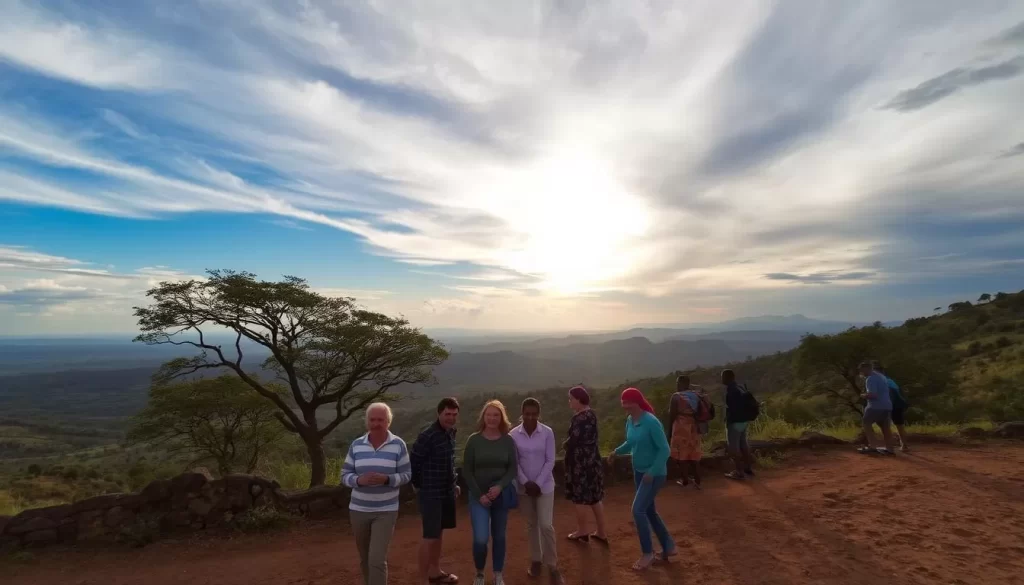
Visiting Tanzania’s Wine Country
Tanzania’s wine country is a fascinating destination for a day trip from Dodoma. The Dodoma Wine region is known for its high-quality wines, made possible by the favorable climate and soil conditions. You can visit local vineyards to taste some of the best Tanzanian wines and learn about the wine-making process.
Many vineyards offer guided tours, providing insights into the production methods and the history of winemaking in the area. It’s a great opportunity to enjoy the scenic views of the vineyards and relax in a serene environment.
Cultural Experiences with Local Tribes
A day trip to visit the Maasai communities near Dodoma is a unique opportunity to experience one of Tanzania’s most iconic tribe cultures firsthand. You can learn about the Maasai’s traditional lifestyle, including their semi-nomadic pastoralism and how they’ve maintained their cultural practices despite modernization.
During your visit, you can observe and participate in cultural demonstrations such as the famous Maasai jumping ceremony. This ceremony is a display of strength and agility, where warriors compete to jump the highest. You’ll also have the chance to engage respectfully with community members, gaining authentic insights into their daily lives and the challenges they face in preserving their traditional way of life in contemporary Tanzania, interacting with the local people.
Best Time to Visit Dodoma
To experience Dodoma at its best, understanding the seasonal variations and significant events is essential. The city’s climate and activities can greatly impact your visit, making some times more favorable than others.
Seasonal Considerations and Weather Patterns
Dodoma’s climate is characterized by a dry season and a wet season. The dry season, which typically runs from June to October, is often considered the best time to visit, as the weather is dry and comfortable. During this period, the temperatures are mild, making it ideal for exploring the city’s attractions, such as the Bunge-Parliament Complex, the heart of the government in Tanzania.
Conversely, the wet season, spanning from November to May, brings rain that can sometimes hinder outdoor activities. However, the landscape becomes lush and green, offering a different kind of beauty.
Festivals and Events in Dodoma
Dodoma hosts various events throughout the year that can enhance your visit. For instance, the Independence Day celebrations on December 9th transform the capital into a vibrant hub of activity, with parades, cultural performances, and special events. If you’re interested in politics, planning your visit around parliamentary sessions can provide a unique insight into the government in action.
Additionally, the city celebrates various religious festivals, such as those at the Anglican Cathedral and the Gadhafi Mosque, showcasing the diverse spiritual traditions of the people of Dodoma. You might also catch university events or agricultural fairs, which highlight the city’s educational importance and farming heritage.

By considering these factors, you can plan your trip to Dodoma during the most opportune time, ensuring a memorable and enriching experience.
Where to Stay in Dodoma
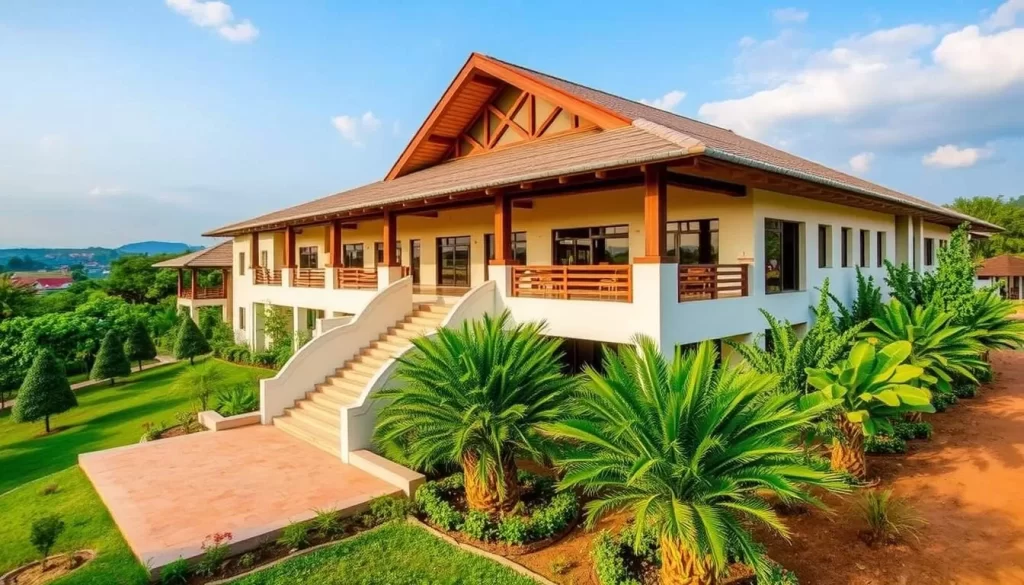
Whether you’re looking for luxury, mid-range, or budget-friendly options, Dodoma has a range of places to stay. As the capital city of Tanzania, Dodoma offers various accommodations to suit different needs and preferences.
Luxury and Mid-Range Accommodations
For a more luxurious experience, consider staying at hotels like The New Dodoma Hotel, which offers a variety of international cuisines and comfortable rooms. The hotel’s outdoor Barbeque Village is a highlight, grilling a range of meats for dinner. You can enjoy dishes like pizza, fish and chips, dhal tadka, and fajitas, influenced by international flavors.
Budget-Friendly Options
If you’re on a tighter budget, there are still plenty of affordable options. You can find clean, basic rooms at the YWCA Hostel, located close to the city center. Prices are significantly lower than comparable options in Dar es Salaam, making it an excellent choice. Alternatively, consider local guesthouses like Nyumba ya Sanaa, where you can experience authentic Tanzanian hospitality without breaking the bank.
Homestay opportunities are also available, allowing you to live with local families and immerse yourself in the culture of Tanzania’s capital. Additionally, budget hotels near the central bus station offer simple yet adequate accommodations at reasonable rates.
By choosing the right place to stay, you can ensure that your visit to Dodoma is both enjoyable and memorable, with the city center being easily accessible from most accommodations.
Conclusion: Making the Most of Your Visit to Dodoma
With its unique blend of traditional and modern attractions, Dodoma is a hidden gem waiting to be uncovered by intrepid travelers. As Tanzania’s political capital, Dodoma offers an authentic glimpse into everyday Tanzanian life, away from the well-trodden tourist paths of East Africa.
While Dodoma presents certain challenges for visitors due to its inland location and developing infrastructure, these are outweighed by the genuine cultural experiences and uncrowded attractions. The city’s historical significance is evident in its position at an ancient crossroads near Lake Tanganyika and its UNESCO World Heritage site at Kondoa, featuring rock paintings dating back centuries.
To make the most of your visit, plan a well-rounded itinerary that combines Dodoma’s urban attractions, such as the Parliament Complex and Anglican Cathedral, with natural features like Simba Hill’s panoramic views and the surrounding grasslands. Consider Dodoma as part of a broader Tanzanian journey, perhaps as a stopover between the northern safari circuit and the southern national parks.
By embracing the opportunity to interact with local people from various tribes and practice your Swahili language skills, you’ll leave with a deeper appreciation of Tanzania’s diversity, having experienced a side of the country that most international visitors never see.
The above is subject to change.
Check back often to TRAVEL.COM for the latest travel tips and deals.

